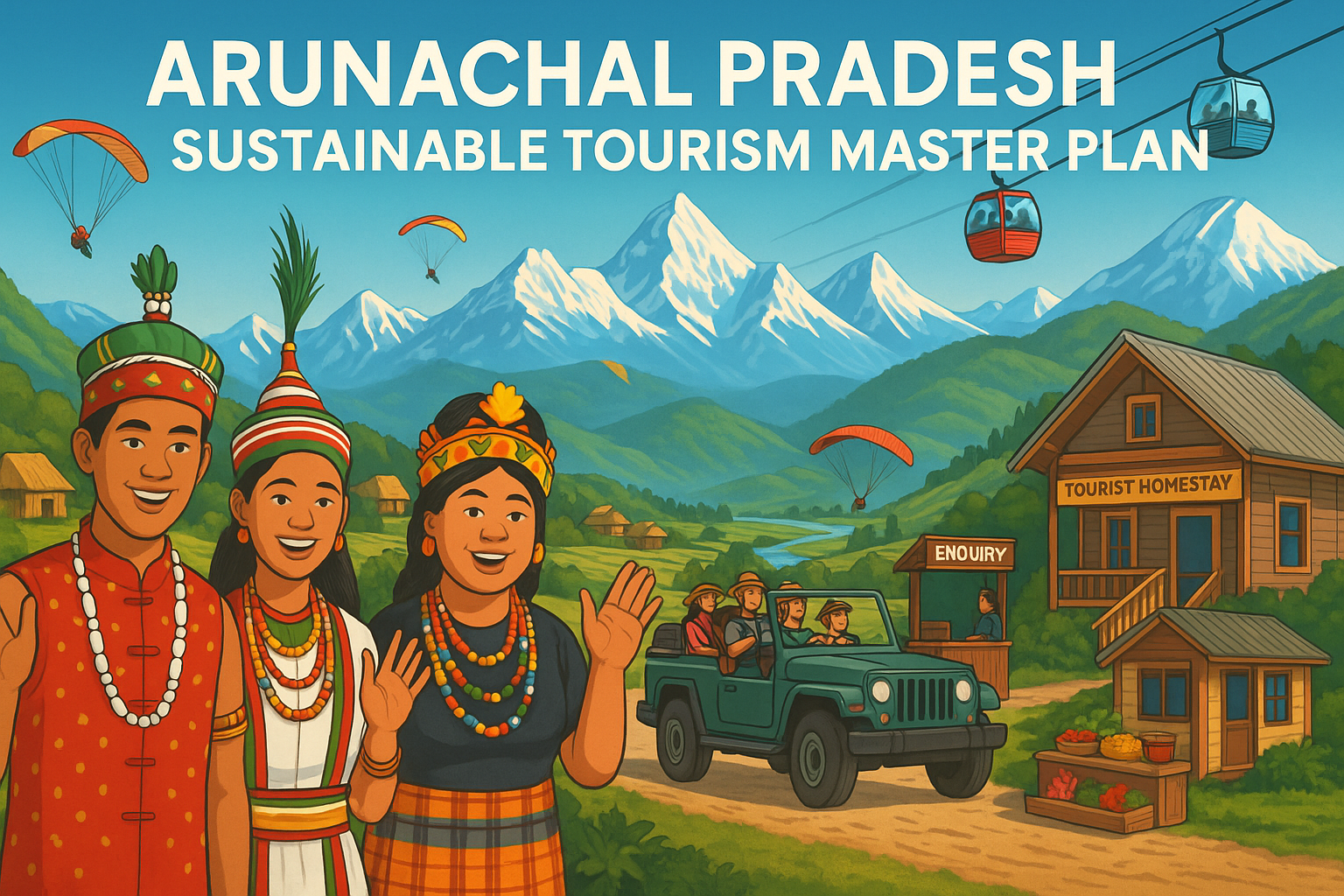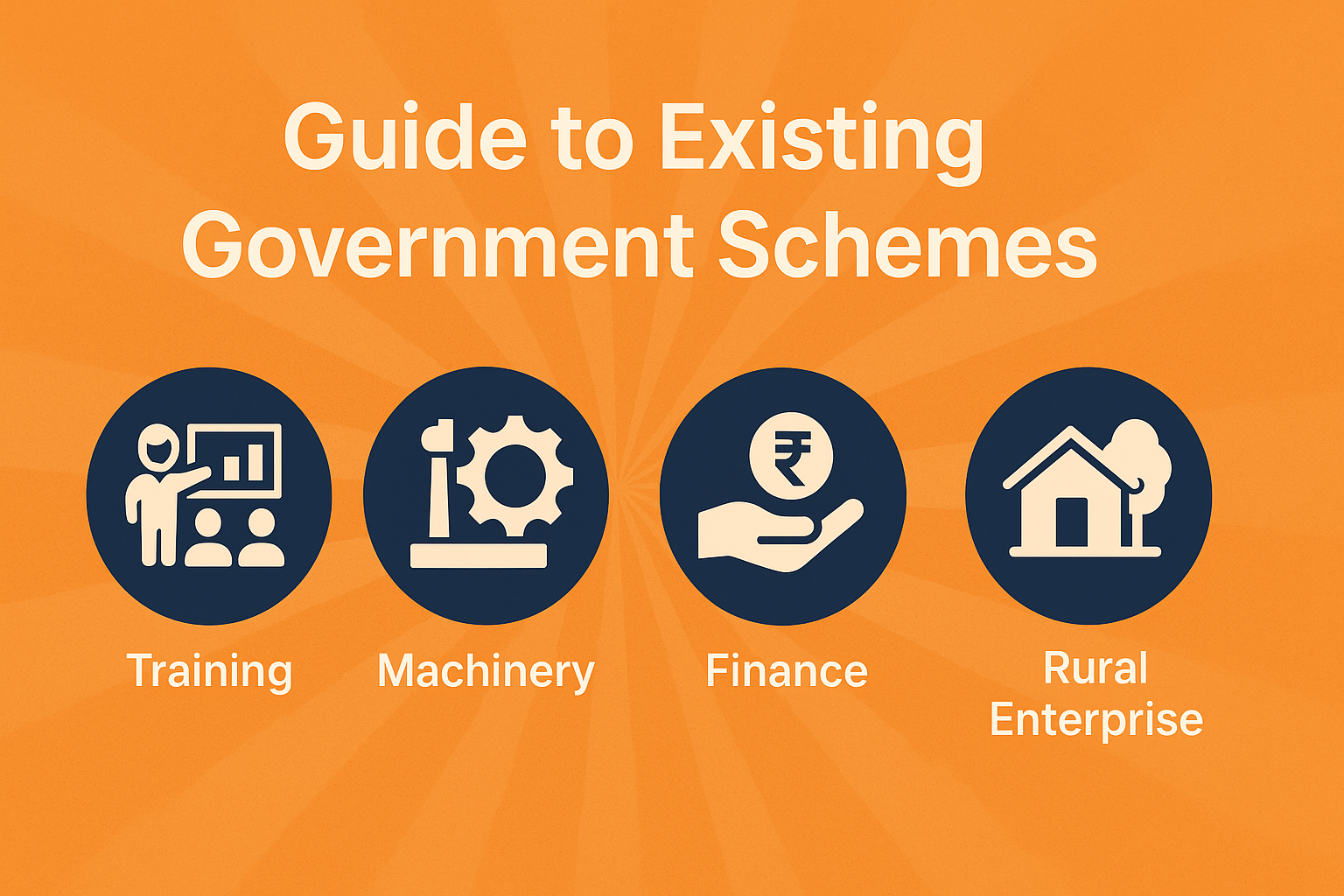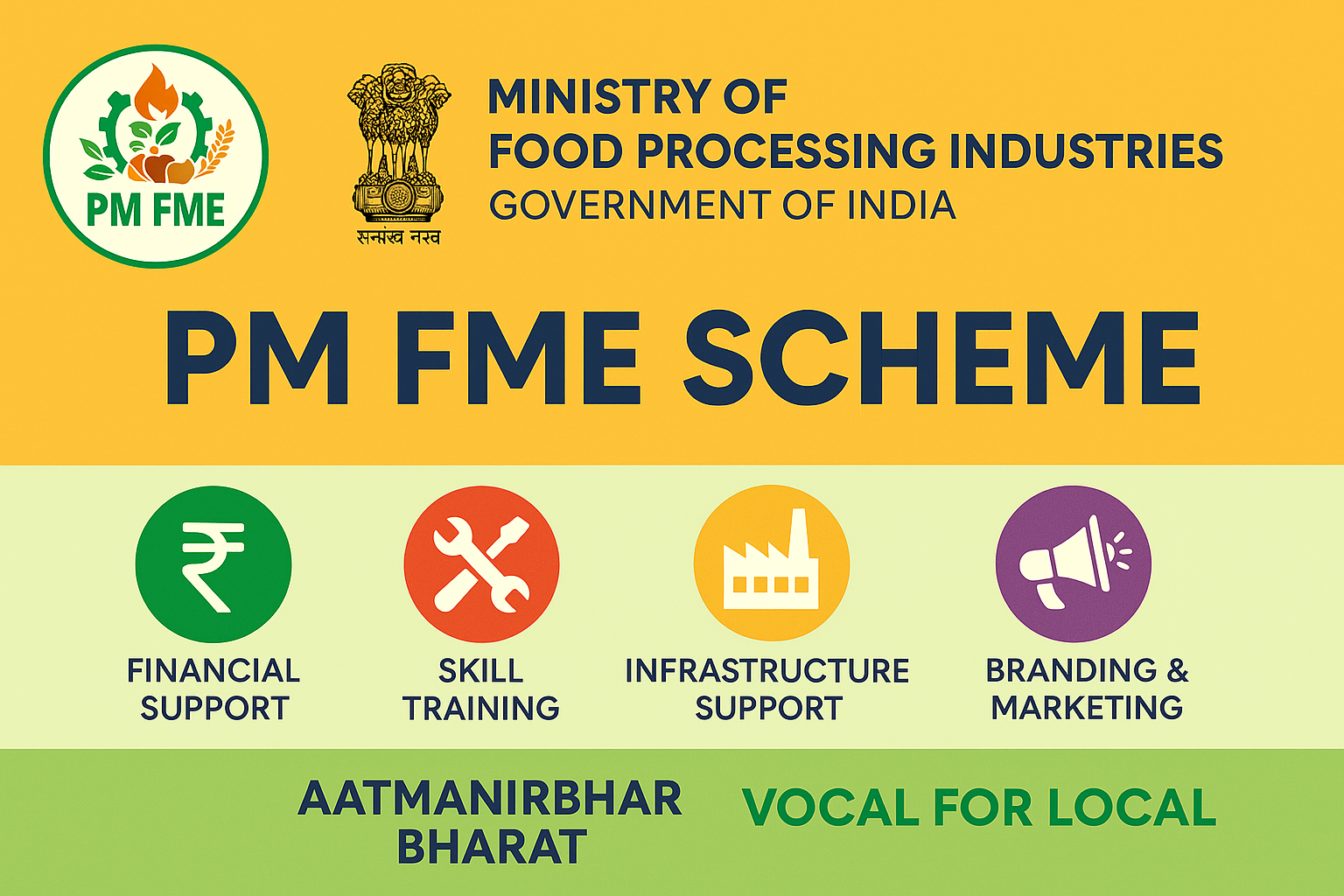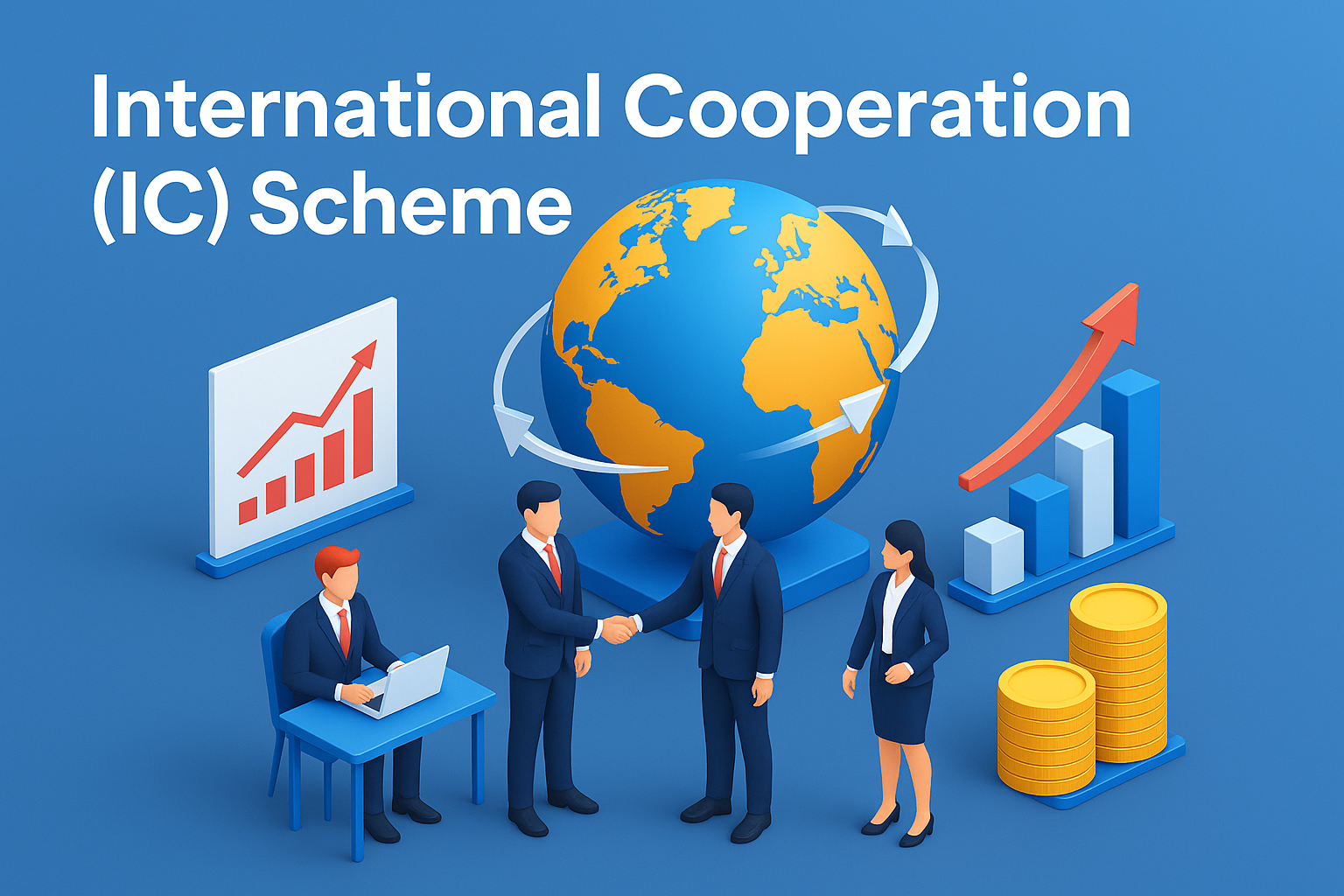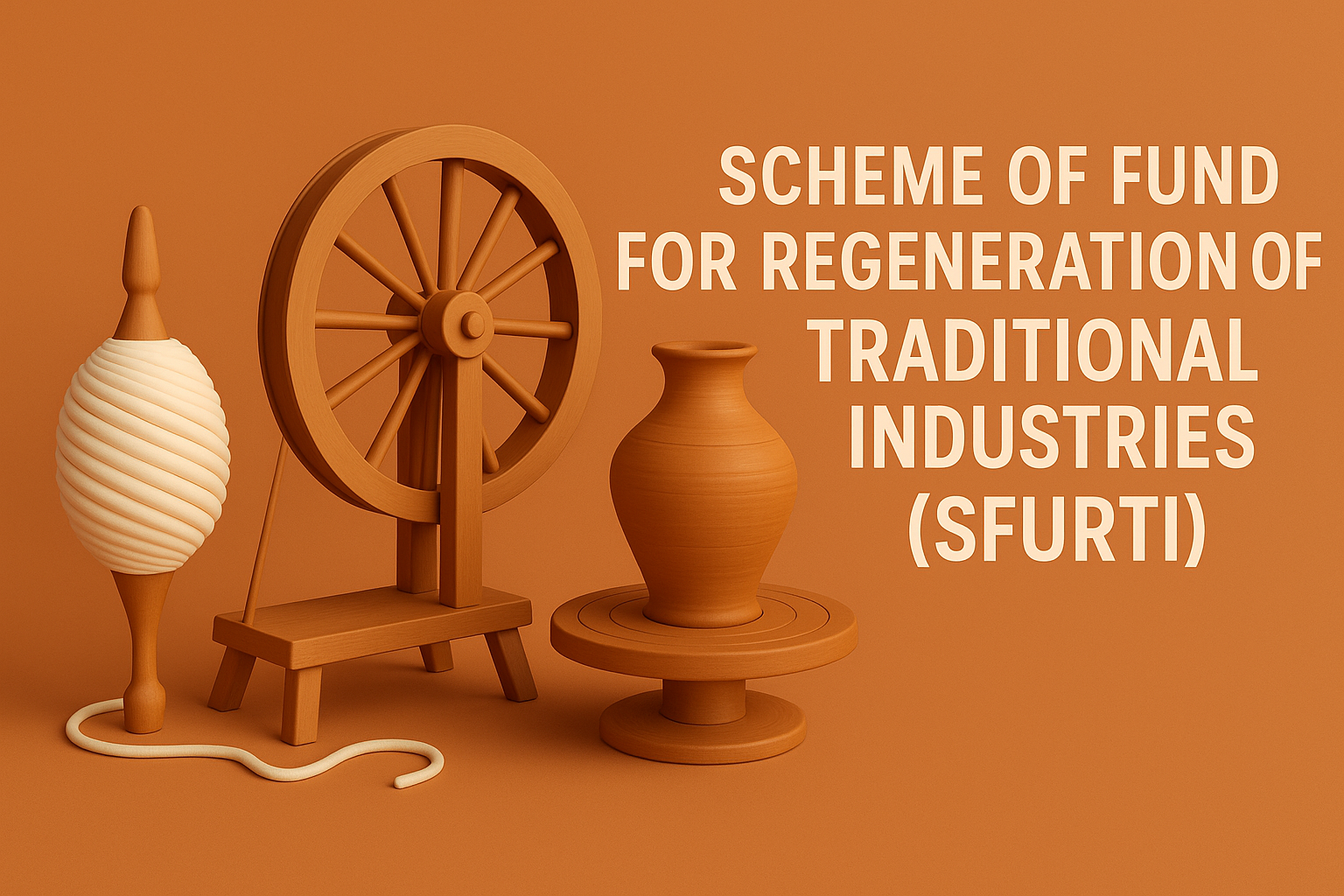Table of Contents
1. Executive Summary
2. Vision Statement
3. SWOT Analysis (Strengths, Weaknesses, Opportunities, Threats)
4. Key Tourism Zones Identified
5. Target Market Identification
6. Proposed Government-Led Tourism Models
7. Strategic Infrastructure & Governance Proposals (Proposed for Government-Led Implementation)
8. Flagship Projects (Proposed for Government-Led/Facilitated Implementation)
9. Revenue & Impact Projections
10. Strategic Imperative: Self-Reliance in Tourism
11. Institutional Partnerships (Recommended for Government Collaboration)
12. Sustainability & Cultural Preservation Framework
13. Monitoring, Evaluation, and Adaptation Framework
14. Sigma Solutions: Your Partner in Transformation
15. Conclusion
Unlocking Arunachal’s Potential: Sigma Solutions’ Blueprint for Sustainable Tourism
Discovering Arunachal – India’s Last Untamed Frontier
Imagine a land where the dawn truly paints the mountains in gold, where ancient tribal traditions thrive amidst pristine wilderness, and every turn reveals a breathtaking vista. This is Arunachal Pradesh, India’s northeastern gem, often called the “Land of the Dawn-Lit Mountains.” For too long, its unparalleled beauty, rich cultural tapestry, and thrilling adventure potential have remained largely undiscovered by the world. But at Sigma Solutions, we see more than just untouched landscapes; we see an immense opportunity to craft a tourism model that is not only world-class but also deeply respectful, sustainable, and directly beneficial to its vibrant tribal communities.
Why a New Blueprint? Sigma Solutions Commitment to a Better Way
Traditional tourism often brings a mixed bag: economic growth, but sometimes at the cost of environmental degradation, cultural erosion, and limited benefits for local people. Arunachal Pradesh, with its fragile ecosystem and diverse indigenous cultures, demands a different approach. This is why Sigma Solutions has meticulously developed a comprehensive Master Plan – a blueprint designed to transform Arunachal into a premier hill station and tribal tourism hub while safeguarding its very essence. Our vision isn’t just about drawing more visitors; it’s about drawing them responsibly, ensuring every step leaves a positive footprint.
Key Pillars of Our Vision: Empowering Communities, Securing Adventures
Our plan focuses on creating a tourism ecosystem where growth and preservation go hand-in-hand. Here’s a glimpse into the innovative strategies we propose:
Empowering Communities Through Direct Involvement
We believe that the heart of Arunachal’s tourism lies with its people. Our blueprint champions tribal-led tourism, ensuring communities are not just participants but direct beneficiaries and custodians. We propose establishing community-operated eco-resorts and homestay clusters, designed with traditional aesthetics but supported with professional training and funding. This means your stay directly contributes to local families, offering authentic cultural immersion while preserving their unique heritage.
A cornerstone of this approach will be the integration and celebration of the Nyishi tribe, the largest tribal group in Arunachal Pradesh. Our plan specifically aims to facilitate tourism experiences that respectfully showcase their rich heritage, including their unique longhouses, intricate cane and bamboo crafts, vibrant festivals like Nyokum Yullo, and their deep connection to the environment, particularly through initiatives like hornbill conservation efforts. We envision specific tourism circuits and designated cultural centers in their heartlands (e.g., Papum Pare, Kurung Kumey, East Kameng districts) to enable respectful engagement and economic upliftment for communities. Imagine learning about the Apatani way of life in a bamboo village or participating in a traditional Adi fishing festival – experiences managed and presented by the locals themselves.
Building World-Class Infrastructure, Sustainably
To unlock Arunachal’s full potential, strategic infrastructure is key. Sigma Solutions’ plan outlines the development of state-run accommodation facilities at key locations like Itanagar Airport and Naharlagun Railway Station, providing reliable, comfortable gateways for travellers. But we don’t stop there. We envision state-owned rental hubs offering a fleet of well-maintained 4×4 vehicles, adventure bikes, and essential trekking/camping gear. This ensures quality, safety, and consistent availability for every adventurer.
Your Safety, Our Priority: Dedicated On-Road Assistance
Navigating new terrains can be challenging, but under our proposed plan, peace of mind is paramount. We advocate for dedicated “Arunachal Tourist Safety Patrol” units – specialised 4×4 vehicles patrolling key tourist routes, ready to offer assistance, guidance, and security. Complementing this, we propose establishing 24×7 “Arunachal Roadside Assistance & Emergency Centres” strategically located along major tourist routes. These centres would be equipped for basic medical aid, minor vehicle repairs, emergency food and water, and reliable communication, ensuring help is always just a call away. This robust network means you can explore with confidence, knowing support is never far.
1. Executive Summary
This master plan outlines an ambitious vision for Arunachal Pradesh to emerge as a global hill station and tribal tourism destination. By strategically leveraging its unparalleled natural beauty, rich cultural heritage, burgeoning wellness opportunities, and thrilling adventure potential, Arunachal Pradesh aims to attract a diverse range of domestic and international tourists. The plan prioritises sustainable development, ensuring that tourism growth directly benefits local communities, preserves the delicate ecology, and celebrates the unique tribal cultures of the region through state-owned and managed resources.
2. Vision Statement
Our vision is to promote sustainable tourism in Arunachal Pradesh, fostering an inclusive environment that empowers tribal communities (including the Nyishi, Adi, Apatani, Monpa, and many others) through direct economic opportunities and cultural recognition. We are committed to preserving the pristine ecology and rich cultural heritage of the state, ensuring that tourism development enhances, rather than diminishes, its unique identity, primarily through government-led initiatives.
3. SWOT Analysis (Strengths, Weaknesses, Opportunities, Threats)
A comprehensive analysis to inform strategic planning:
- Strengths:
- Unspoiled natural beauty and biodiversity (Eastern Himalayas, dense forests, unique flora/fauna).
- Rich cultural diversity with distinct traditions, languages, festivals.
- Immense adventure tourism potential (rivers, mountains, challenging terrains).
- Growing global interest in responsible, experiential, eco, and authentic cultural tourism.
- Strategic location with potential for cross-border tourism (Bhutan, Myanmar).
- Weaknesses:
- Limited and challenging connectivity (road, rail, air) to many remote areas.
- Historically, insufficient tourism infrastructure (accommodation, healthcare, waste management, digital connectivity).
- Limited trained manpower in hospitality and specialised tourism services.
- Perceived security concerns in certain border areas (though largely peaceful for tourists).
- Relatively late entry into the organised tourism sector compared to other states.
- Opportunities:
- Increasing demand for nature-based, adventure, wellness, and cultural immersion experiences.
- Strong support and funding from the Central Government for North East development.
- Potential for high-value, low-volume tourism that aligns with sustainability goals.
- Leveraging digital platforms for direct state marketing and booking.
- Implementing robust community-based tourism models for direct local benefit.
- Arunachal Pradesh’s new Tourism Policy (launched in April 2025) focuses on investment, ease of doing business, and sustainability.
- Threats:
- Environmental degradation due to uncontrolled or poorly managed tourism.
- Loss of cultural authenticity occurs if not carefully preserved and managed.
- Impact of climate change on fragile Himalayan ecosystems.
- Competition from established national and international hill stations and adventure destinations.
- Inadequate waste management leads to pollution and a negative perception.
- Economic leakage if tourism benefits do not remain within local communities.
4. Key Tourism Zones Identified
The master plan identifies several key tourism zones, each with distinct characteristics and potential for specialised development:
- Tawang is renowned for its stunning monasteries, high-altitude landscapes, spiritual significance, and the Monpa tribal culture.
- Ziro: Famous for the unique Apatani tribal culture, terraced paddy fields, and the globally recognised Ziro Music Festival.
- Mechuka: Known for its picturesque valleys, adventurous terrain, the vibrant Memba tribe, and potential for winter sports.
- Dirang/Bomdila: Offers a blend of scenic beauty, Buddhist monasteries, and access to diverse tribal villages.
- Pasighat/Dambuk: Gateway to the eastern Himalayas, with significant potential for river-based activities, agricultural tourism, and indigenous festivals.
- Namdapha & Pakke: Prime locations for wildlife and eco-tourism, home to diverse flora and fauna, including tigers and unique bird species.
- Nyishi Heartland (Papum Pare, Kurung Kumey, East Kameng, etc.): Focus on showcasing the vibrant culture of the largest tribe in Arunachal Pradesh, including their unique Donyi-Polo traditions, longhouse architecture, Nyokum Yullo festival, and traditional crafts. Development of community-led tourism initiatives and cultural experience hubs.
5. Target Market Identification
Defining who the plan aims to attract will guide state-led marketing and product development:
- Primary Targets:
- Adventure Seekers: Trekkers, rafters, paragliding enthusiasts, mountaineers looking for challenging and authentic experiences.
- Culture Enthusiasts: Travelers interested in deep immersion into tribal traditions, festivals and village life.
- Eco-tourists/Nature Lovers: Wildlife photographers, bird watchers (especially those interested in hornbills and the Nyishi tribe’s conservation efforts), and those seeking pristine natural environments and responsible wildlife viewing.
- Wellness & Spiritual Seekers: Individuals looking for tranquil retreats, traditional healing practices, and spiritual solace (e.g., in Tawang, or through Donyi-Polo practices).
- Secondary Targets:
- Domestic Families/Groups: Seeking unique experiential travel away from mainstream tourist destinations.
- Researchers/Academics: Interested in anthropology, biodiversity, indigenous studies and sustainable development.
- Food Enthusiasts: Travelers keen on exploring local and tribal cuisines, farm-to-table experiences, and cooking workshops.
6. Proposed Government-Led Tourism Models
A multi-faceted approach to tourism development is proposed, with the government directly developing and managing key offerings:
- Adventure Tourism:
- State-Organized Expeditions: Water rafting on designated stretches of Siang and Kameng rivers, paragliding sites with state-trained instructors, and extensive trekking trails through Himalayan ranges.
- Infrastructure: Development of state-owned ropeways for accessibility and scenic views in strategic locations (e.g., Tawang Cable Car).
- Eco-tourism:
- Wildlife Safaris: Government-managed and eco-friendly safari circuits in protected areas (e.g., Pakke Tiger Safari Circuit, with recognition of local tribal conservation roles, including the Nyishi Hornbill Nest Adoption Program).
- Jungle Camping & Eco-Lodges: Development of state-owned and operated eco-lodges and designated jungle camping sites that adhere to strict environmental standards.
- Wellness Tourism:
- State Wellness Retreats: Establishment of government-managed detox retreats, natural forest spas, and centers for herbal healing based on indigenous knowledge (e.g., Mechuka Wellness Retreat).
- Cultural Tourism:
- Tribal Cultural Villages: Development and management of cultural villages showcasing distinct tribal lifestyles, crafts, and performances (e.g., Ziro Bamboo Cultural Village, Cultural Experience Hubs in Papum Pare or Kurung Kumey districts).
- State Museums & Festival Venues: Establishment of state-run museums to preserve and exhibit tribal history and artifacts, and development of dedicated venues for cultural festivals (e.g., Pasighat Fishing Festival, Nyokum Yullo festival grounds).
- Culinary Tourism:
- Agro-Tourism Farms (State-Supported): Promote and support farm stays and food trails directly with local communities, potentially featuring state-organized cooking workshops highlighting tribal cuisine.
7. Strategic Infrastructure & Governance Proposals (Proposed for Government-Led Implementation)
Robust infrastructure and effective governance are critical, with a strong emphasis on state control and quality:
- State-Run Accommodation Facilities:
- Establish “Arunachal Tourism Guest Houses/Lodges” near Itanagar Airport, Naharlagun Railway Station, and key tourism zones. These facilities will be eco-friendly, staffed by trained local youth, and offer a range of options from budget to premium.
- Develop “Community-Operated Eco-Resort/Homestay Clusters” with government support (design, financial assistance, training) to ensure quality while maintaining local ownership and cultural authenticity. This will particularly include the development of model homestay clusters where appropriate.
- State-Owned Vehicle & Equipment Rental Hubs:
- Establish “Arunachal Tourism Rental Hubs” at Itanagar Airport, Naharlagun Railway Station, and major district headquarters.
- Maintain a diverse fleet of state-owned cars (SUVs, self-drive/chauffeur-driven), adventure bikes, and high-quality trekking/camping/rafting equipment.
- Implement robust in-house maintenance and servicing units with local mechanics.
- “Arunachal Tourist Safety Patrol” Units:
- Establish dedicated patrolling cars under the Arunachal Pradesh Police, exclusively for tourism-related matters in tourist places.
- Vehicles will be distinctly branded, equipped with communication and first-aid kits, and deployed in high-footfall areas and along major tourist routes.
- Staffed by specially trained “Tourist Police” personnel focusing on safety, assistance, and guidance.
- 24×7 “Arunachal Roadside Assistance & Emergency Centers”:
- Establish state-managed 24×7 centers at strategic intervals on major tourist routes.
- These centers will provide basic medical aid, vehicle repair bays, emergency food/water, fuel/charging stations, resting areas, and communication hubs.
- Deploy mobile rescue teams from these centers for rapid response.
- Establish a dedicated 24×7 multi-lingual Tourism Emergency Helpline.
- Digital Portal and Mobile App (State-Managed):
- Develop a comprehensive government-run digital platform for all tourism services: online booking for accommodation, rentals, and tours; ILP/PAP application and tracking; information on attractions, routes, safety guidelines, and emergency contacts.
- Connectivity & Accessibility:
- Invest in the development and maintenance of state-run bus services and feeder roads.
- Explore and implement state-funded ropeway projects to improve access to remote attractions.
- Local Youth Training and Capacity Building (Government Institutions):
- Intensify training programs for local youth in hospitality, guiding (adventure, eco, cultural), vehicle maintenance, and entrepreneurship through state-run institutes like NIMAS, IITTM, and IHMs. The “Chief Minister’s Paryatan Siksha Yojana” will be expanded.
8. Flagship Projects (Proposed for Government-Led/Facilitated Implementation)
Key projects to drive immediate impact and showcase the state’s vision:
- Ziro Bamboo Cultural Village: A state-developed and community-managed cultural hub showcasing Apatani bamboo craftsmanship, sustainable living, and cultural performances.
- Tawang Cable Car: A state-owned and operated cable car system offering panoramic views and improved access to Tawang Monastery and surrounding areas.
- Mechuka Wellness Retreat: A state-established and managed retreat focusing on traditional healing practices, meditation, and holistic well-being in the serene Mechuka valley.
- Pasighat Fishing Festival Venue: Development of a dedicated, state-supported venue for the annual Pasighat Fishing Festival, celebrating traditional Adi fishing practices.
- Pakke Tiger Safari Circuit: Development of an eco-friendly and responsibly managed safari circuit within the Pakke Tiger Reserve, operated by the Forest Department in collaboration with local communities, acknowledging the vital role of Nyishi community in hornbill conservation.
- Nyishi Cultural Experience Hub / Nyokum Festival Tourism Circuit: A dedicated cultural center and development of infrastructure around key Nyishi festival grounds (e.g., for Nyokum Yullo), designed to provide authentic cultural immersion experiences and promote Nyishi arts, crafts, and traditions.
9. Revenue & Impact Projections
The implementation of this master plan is projected to yield significant positive impacts:
- 500% Tourist Growth in 5 Years: An ambitious but achievable target, driven by enhanced state-controlled infrastructure, diverse government-managed offerings, and strategic promotion.
- Direct and Indirect Jobs Creation: Primarily through state-owned tourism enterprises, training programs, and community-based initiatives, ensuring direct benefits to locals.
- Large Eco-tourism Revenue: A substantial contribution to the state’s economy, emphasising sustainable and high-value tourism.
- Top 5 Adventure Destination Ranking: Positioning Arunachal Pradesh as a premier adventure destination in India through state-led promotion and safety standards.
10. Strategic Imperative: Self-Reliance in Tourism
It’s time for Arunachal Pradesh to foster greater self-reliance in its thriving tourism sector. For too long, significant portions of the tourism revenue, particularly from services like adventure tour operations and specialized equipment rentals, have flowed out of the state to operators based in cities like Kolkata or Guwahati. This means that revenue from vital services, such as bike rentals for exploring Arunachal’s breathtaking routes, often benefits businesses far outside the state’s borders. Our master plan is designed to empower local entrepreneurs and the state to capture this value within Arunachal. By developing state-owned vehicle and equipment rental hubs and providing comprehensive support to local entrepreneurs, we aim to drastically reduce this dependency. This means more local jobs, more local investment, and a greater share of the tourism pie staying within the state, building a truly self-sustaining and prosperous tourism economy.
11. Institutional Partnerships (Recommended for Government Collaboration)
Strong collaboration with various governmental and specialized agencies is crucial:
- Ministry of Tourism (Government of India): For policy alignment, funding support (e.g., Swadesh Darshan, PRASAD schemes), and national-level promotion.
- Ministry of Development of North Eastern Region: For the matters relating to the planning, execution and monitoring of development schemes and projects in the North Eastern Region
- Ministry of Tribal Affairs (Government of India): To ensure that tribal empowerment, welfare, and cultural preservation are central to the plan.
- North Eastern Council (NEC): For regional development support and infrastructure funding for connectivity projects.
- TRIFED (Tribal Cooperative Marketing Development Federation of India): For promoting tribal arts, crafts, and products developed through state-supported initiatives.
- NABARD (National Bank for Agriculture and Rural Development): For financial assistance and rural development initiatives related to state-supported tourism projects and community enterprises.
- Ayush Ministry (Ministry of Ayurveda, Yoga & Naturopathy, Unani, Siddha and Homoeopathy): For promoting wellness tourism and traditional healing practices in state-run retreats.
- National Institute of Mountaineering & Adventure Sports (NIMAS): For specialised training in adventure tourism and safety.
- Indian Institute of Tourism and Travel Management (IITTM) & Institute of Hotel Management (IHM): For professional training in hospitality and tourism management for local youth.
- Public-Private Partnership (PPP) Initiatives: While core infrastructure is state-led, strategic PPPs will be explored for niche, high-investment projects (e.g., large resorts, specialized adventure parks) where private expertise and funding can complement state efforts under strict government regulation and benefit-sharing models.
12. Sustainability & Cultural Preservation Framework
At the core of this master plan is an unwavering commitment to sustainability and the preservation of Arunachal Pradesh’s unique heritage through government policy and enforcement:
- Comprehensive Waste Management & Green Initiatives:
- Cleanliness Protocol Enforcement: Strict implementation of the existing “Cleanliness Protocol” (2019) across all tourist areas, focusing on waste reduction, segregation at source, recycling, and composting.
- Zero Plastic Zones: Enforce bans on single-use plastics in all tourist areas and promote reusable alternatives.
- Renewable Energy & Water Conservation: Mandate and incentivise the use of solar power and other renewable energy sources for all state-run and approved tourism facilities. Implement rainwater harvesting and greywater recycling.
- Eco-Certification Program: Develop and enforce a state-managed eco-certification system for all accommodations and tour operators, ensuring compliance with environmental standards.
- Carrying Capacity Studies & Tourist Limits:
- Conduct comprehensive carrying capacity studies for all ecologically and culturally sensitive zones.
- Implement strict tourist limits and regulated access in these areas to prevent over-tourism and environmental degradation.
- Protection of Indigenous Culture & Intellectual Property:
- GI Tagging of Crafts: Actively promote and protect traditional tribal arts, crafts, and products (including cane and bamboo crafts, weaving, and traditional ornaments) through Geographical Indication (GI) tagging.
- Cultural Sensitivity Training: Integrate mandatory cultural sensitivity training for all state tourism staff, guides, and patrol units, with specific modules on the customs and traditions.
- Traditional Knowledge Integration: Ensure that any commercial use of traditional knowledge (e.g., herbal healing, culinary practices, hornbill conservation practices) is done with the informed consent of communities and includes fair benefit-sharing mechanisms.
- Community Veto Power: Empower local communities with a formal say in tourism projects proposed within their traditional lands, particularly regarding cultural implications.
- Environmental Impact Assessment (EIA):
- Mandatory EIA for all new tourism infrastructure projects, with public consultation and transparent reporting.
13. Monitoring, Evaluation, and Adaptation Framework
A robust system for continuous assessment and strategic adjustment:
- Performance Indicators (KPIs):
- Economic: Tourist arrivals (domestic/international), average length of stay, tourist spending, local employment rates in state-run units, income generation for tribal communities from tourism, and private investment attracted.
- Social/Cultural: Local community satisfaction with state-led tourism initiatives, preservation index of cultural sites/practices, number of tribal youth employed and trained, reported instances of cultural degradation (reduction target). Specific metrics for cultural participation and benefit will be tracked.
- Environmental: Per capita waste generation by tourists, changes in forest cover/biodiversity in tourist zones, water consumption, compliance rates with eco-certification.
- Governance: Efficiency of ILP/PAP processing, Tourist Safety Patrol response times, grievance redressal rates, stakeholder participation in decision-making.
- Regular Monitoring & Evaluation:
- Annual Reviews: Comprehensive reviews of the master plan’s progress against KPIs by a high-powered committee headed by the Chief Minister (as per the new tourism policy).
- Stakeholder Consultations: Regular, structured consultations with local communities, state-run tourism operators, police, health departments, and environmental organisations.
- Feedback Mechanisms: Implement robust digital and physical systems for tourist feedback and grievance redressal, directly linked to responsible departments.
- Adaptive Management: A strong commitment to adjust the plan, policies, and implementation strategies based on monitoring results, emerging challenges (e.g., climate change impacts), and new opportunities.
14. Sigma Solutions: Your Partner in Transformation
Sigma Solutions offers unparalleled expertise to turn this visionary master plan into a tangible reality for Arunachal Pradesh. We provide end-to-end support for developing and implementing a world-class, sustainable tourism ecosystem. Our services include:
- Business Registration: Guiding local entrepreneurs and state-led entities through the seamless process of establishing tourism-related businesses within Arunachal Pradesh.
- Licensing and Certifications: Assisting with all necessary tourism-specific licenses, safety certifications, and environmental compliance, ensuring adherence to national and international standards.
- Architectural and Construction Services: Providing design and execution expertise for eco-friendly resorts, community homestays, state-run guest houses, and other tourism infrastructure, ensuring cultural sensitivity and sustainability.
- Adventure Zones Setup: Expert planning, design, and safe setup of adventure activities, including trekking routes, rafting points, paragliding sites, and adventure camps, adhering to global safety protocols.
- Equipment Supply: Sourcing and supplying high-quality, durable equipment for adventure tourism, vehicle rentals, and hospitality services, ensuring reliability and competitive pricing for state and private operators.
- Marketing and Development for Tourism-Led Entrepreneurs: Crafting compelling marketing strategies, digital presence, and business development support for local entrepreneurs to promote their unique offerings nationally and internationally.
- Drafting Project Report for Tourism-Related Projects: Developing detailed, bankable project reports and feasibility studies for state-led initiatives and private ventures, crucial for securing funding and approvals.
- Survey and Feasibility Reports: Conducting in-depth market surveys, site assessments, and economic feasibility studies to identify high-potential tourism products and ensure viable investments.
- Turnkey Project Management: Offering comprehensive, end-to-end project management from conceptualisation to execution, ensuring timely delivery, budget adherence, and quality control for all tourism infrastructure and service development.
15. Conclusion
The Arunachal Pradesh Sustainable Tourism Master Plan is a definitive blueprint for building a sustainable, tribal-led, and globally admired tourism model, directly managed and supported by the state government. By systematically developing state-owned and operated tourism infrastructure and services, Arunachal Pradesh will ensure a higher level of quality, maximise revenue retention within the state, foster direct economic prosperity for its people, gain international recognition for its unique offerings, and safeguard its pristine ecological and cultural heritage for future generations. This plan envisions a future where tourism is a powerful force for inclusive growth, celebrating the rich tapestry of Arunachal’s natural wonders and diverse tribal communities.

